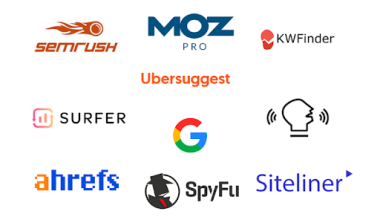Creating and selling a digital product online can be a great way to leverage your expertise, knowledge, or passion into a profitable business. Digital items, such as eBooks, courses, software, music, or graphic designs, are intangible things that can be given to customers electronically.
The beauty of digital products is that they can be created once and sold again and again, eliminating the need for physical inventory or delivery. Here’s how to develop and market your digital goods online.
Determine your niche and target market.
The first step when creating a digital product is identifying a specific niche or area of expertise that you can use to solve a specific problem for your target audience. Market research and keyword analysis can be used to uncover valuable niches and underdeveloped markets. After determining your niche, you must identify your target audience, including their pain points, desires, and purchasing behaviors.
Pick a type of digital product
Your next step is to decide what kind of digital product you want to create. This will be determined by your skills, knowledge, and resources. You may create an eBook, online course, webinar, software, mobile app, membership site, or other digital products to address the challenges of your target audience.
Create and plan your digital product.
It’s time to plan and develop your digital product now that you’ve decided on its type. You must study and organize your material, create your product, and select the appropriate format and delivery platform. To build your digital product, you can utilize apps like Canva, PowerPoint, or Google Docs. Some aspects of the production process, such as graphic design, video production, or copywriting, can also be outsourced.
Create an online store or platform.
After creating your digital product, you must set up your online store or platform to sell it. You can sell your digital product using your own website, an online marketplace, or a third-party platform such as Gumroad, Teachable, or ClickBank. To promote and sell your digital product, you must select the appropriate price plan, payment channel, and marketing tools.
Promote your digital product.
The last stage is to market your digital product to your intended audience. To contact your potential customers, you can utilize a variety of marketing channels such as social media, email marketing, content marketing, affiliate marketing, or paid advertising. To persuade your customers, you must design a captivating sales page, testimonials, and product demos that show the potential of your digital product.
Concentrate on quality and value.
To be successful in the digital product sector, you must focus on creating high-quality and valuable content that solves your consumers’ problems or fulfills their aspirations. Your digital product should be well-researched, organized, and presented in a clear and appealing manner. You should also endeavor to provide exceptional customer service, such as replying quickly to consumer inquiries and issuing refunds if necessary.
Iterate and test your product
It’s a good idea to test and iterate your digital product with a group of beta testers or early adopters before releasing it to the public. This will assist you in identifying any problems, gaps, or places for improvement in your product, as well as gathering comments and testimonials that you can use to sell it.
Effective Ways of Promoting Your Digital Products
Here are some effective strategies for selling your digital products:
Create an effective website or landing page. Because your website or landing page serves as your online storefront, it’s critical to establish a solid first impression. Make certain that your website is well-designed, user-friendly, and informative. Include unambiguous calls to action, such as “Buy Now” buttons or “Sign Up for a Free Trial” links.
Make use of social media. Social networking is an excellent platform for connecting with potential customers and promoting your digital products. Share blog entries, videos, and other content that shows your products’ benefits. To reach a larger audience, you may also use social media ads.
Email promotion. Email marketing is an excellent approach to stay in touch with existing consumers while also promoting new products. You can send out regular emails with product updates, special offers, and discounts.
Collaborate with influencers. Collaboration with influencers is an excellent method to reach a new audience. Find influencers in your target market that have a large following and approach them about marketing your items.
Attend industry gatherings. Attending industry events allows you to meet potential consumers and partners. These events can also be used to promote your products and create leads.
Run competitions and giveaways. Contests and giveaways are an excellent method to generate enthusiasm and talk about your items.
Make your content search engine friendly. When creating material, remember to optimize it for search engines so that people may find it when looking for information on your topic.
Launch sponsored advertising campaigns. You can execute sponsored advertising campaigns on social media or search engines to reach a larger audience quickly.
Best Platforms to Launch Your Digital Products
There are many great platforms to launch your digital products. Here are a few of the most popular options:
Shopify is a prominent e-commerce platform with several functionality and customization choices. It’s a terrific option for businesses of all sizes, and it’s really simple to use.
WooCommerce is a popular WordPress plugin for selling digital things on your website. It’s an excellent choice for companies that already have a WordPress website.
Gumroad is a popular site for selling digital things to customers directly. It’s an excellent solution for companies who want to keep things simple and don’t require a lot of bells and whistles.
Sellfy is a platform for selling digital products to clients directly. It has a number of capabilities, such as the ability to design unique sales pages and receive payments from various sources.
Teachable is a well-known platform for developing and selling online courses. It includes capabilities such as the ability to design unique courses, track student progress, and deliver content in a number of forms.
Selar is a popular course-hosting platform originally developed for the local Nigerian and African market. Creators in the African market can leverage this platform to sell their courses internationally to buyers. Selar offers multi-currency payment capability, from Naira to Dollar and other African currencies.
READ: The Power of Email Marketing – How to build and monetize an email list.
Factors to Consider When Choosing a Platform for Your Digital Product
There are various elements to consider when picking a platform for your digital product to ensure that it meets your needs and goals. Here are a few things to think about:
Target Audience: Understanding your target audience and their preferences is essential. Consider the devices they use, the operating systems they utilize, and other pertinent factors. Select a platform that will effectively reach and engage your target audience.
Functionality: Determine the specific features and functionalities that your digital product requires. Consider whether the platform includes the tools, APIs, and connectors required to provide those functionalities. Check if the platform can handle your product’s scalability and growth potential.
Development Resources: Evaluate the technological resources at your disposal. Consider the programming languages, frameworks, and tools required for platform development. Consider the platform’s ease of development and the availability of competent developers.
Cost and Budget: Assess the platform’s financial ramifications. Consider the platform’s initial charges, monthly maintenance fees, transaction fees, and any other costs. Check to see if the platform is within your budget and gives a fair return on investment.
Custom Functionality: Check how much customization you need for your digital product. Some platforms allow for substantial flexibility, while others have restrictions. Check to see if the platform allows you to customize the user experience, branding, and functionality to match your product vision.
Security: Security is essential for any digital product. Examine the platform’s security measures, such as data encryption, access controls, and compliance with relevant standards (for example, GDPR, HIPAA). Consider the platform’s track record in dealing with security breaches and vulnerabilities.
User Experience: Consider the user experience (UX) and design capabilities of the platform. Examine whether the platform enables you to design user interfaces that are both intuitive and engaging. A good user experience can have a big impact on the success of your digital product.
Support and documentation: Assess the platform’s level of support. Examine whether they provide documentation, tutorials, forums, or dedicated customer support. This is useful for resolving problems, learning the platform, and guaranteeing a smooth development and deployment process.
Analytics and Insights: Consider the platform’s capacity to deliver analytics and insights into the performance of your digital product. Look for features that enable you to track user activity, measure key performance indicators, and acquire insights to make educated product-improvement decisions.
Integration Options: Evaluate the platform’s capacity to integrate with other systems or third-party services. Consider whether integration with payment gateways, CRM systems, analytics tools, or other platforms is required. Compatibility and integration ease might help to streamline your workflows.
Conclusion
Selling your digital products online successfully requires having the right network and knowledge to make it successful. In this post, we’ve explained the things you need to know and do to make selling your digital products successful.






